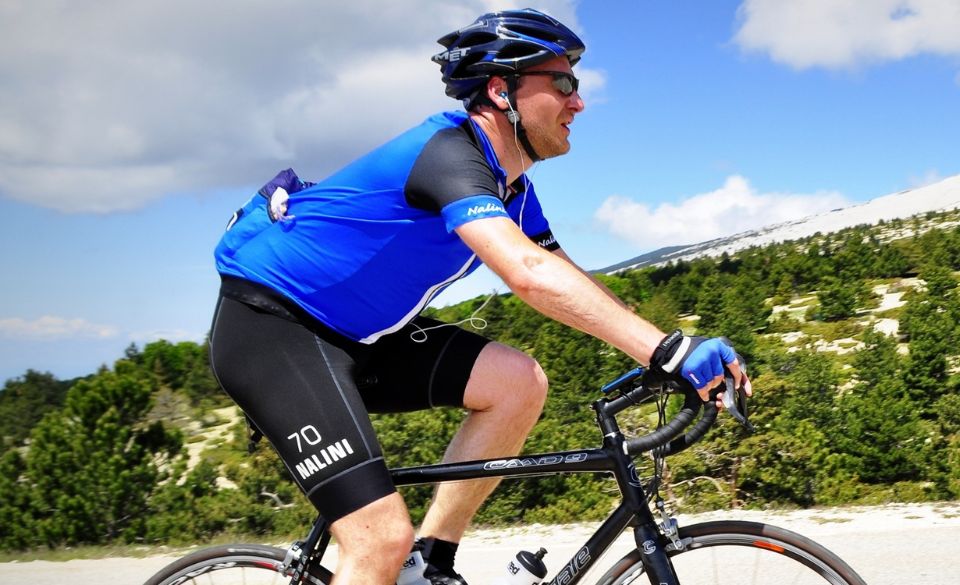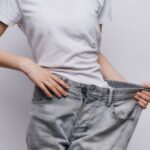
Avoiding saddle soreness – A complete Guide
Page Contents
No matter how strong your legs, how finely tuned your heart and lungs, or how expensive and lightweight your bike may be, if you experience discomfort in your backside while cycling, your ride enjoyment and average speed can take a significant hit. Saddle soreness can lead to constant shifting and searching for a comfier position instead of focusing on your ride. Moreover, if not addressed, it can lead to actual sores, which might keep you off the bike for an extended period. In this article, we will explore the causes of saddle soreness and provide valuable tips to prevent and alleviate this discomfort.
Understanding Saddle Soreness
Saddle soreness refers to the pain or discomfort experienced in the areas of your body in contact with the saddle, such as your ‘sit-bones’ or, in more aggressive riding positions, the perineum – the area between your anus and genitals. Chafing of the inner thighs against the saddle can also be a source of discomfort. While some soreness and temporary redness are expected during long rides, significant pain that affects your ability to ride should not be ignored.
Common types of saddle sores include infected hair follicles, known as folliculitis, and boils, known as furuncles. Infected follicles typically lead to small sores that clear up relatively quickly. However, untreated boils can quickly become severe and may require medical attention. The development of saddle sores is influenced by factors such as pressure from bodyweight, friction from pedaling, sweat, temperature, and reduced blood flow.
Preventing Saddle Soreness
To avoid saddle soreness and discomfort, there are several preventive measures you can take:
Proper Bike Fit
Ensure that your bike is well-fitted to your body. Incorrect saddle height, handlebar height/reach, and weight distribution can contribute to discomfort. Leg length discrepancies should also be addressed through professional bike fitting.
Saddle Selection
Finding the right saddle for your unique anatomy is crucial. Remember that bigger and padded isn’t always better; sometimes, ultra-light and thin saddles can be more comfortable. Don’t hesitate to explore saddle designs with cut-outs, twin noses, and channels, as these features can help alleviate pressure points. Many bike shops allow you to test different saddles to find the one that suits you best. Over time, your saddle will adapt to your shape.
High-Quality Shorts
Invest in high-quality cycling shorts with well-designed pads. Budget shorts may lead to a sore behind due to inferior padding. Different pads suit different riders, so once you find one that works for you, stick with it. Consider bib shorts for better stability while riding and avoid wearing additional underwear, especially cotton, which can retain moisture and contribute to soreness and skin irritation.
Emollient/Chamois Cream
Apply chamois cream to the pad in your shorts and to your perineum before riding. While it may feel unusual at first, it’s highly effective in reducing friction, hydrating the skin, and preventing cracking. Some chamois creams even have antibacterial properties to maintain cleanliness.
Gradual Progress
As with all aspects of cycling training, take the time to adapt. Novice riders often sit heavily on their saddles, leading to more bouncing and discomfort. Experienced riders distribute their weight and power more effectively, resulting in a more stable riding position. Follow a structured training plan to develop your fitness and technique slowly.
Stand Up
Even during flat rides, stand up out of your saddle every 10-15 minutes to provide your backside with a brief respite and restore blood flow.
Maintain Cleanliness
Saddle sores thrive in dirty and damp conditions. Always wear clean shorts for each ride and avoid sitting around in damp gear after your ride. If you’re on a multi-day trip, pack enough shorts or consider using travel wash. Using antibacterial soap in the shower post-ride can help thoroughly clean the saddle contact area.
Anatomical Considerations
In some cases, saddle soreness can lead to more serious and gender-specific conditions:
For Males: Compression of the dorsal penile nerve can cause penile numbness. If this sensation persists, it could be a sign of potential erectile dysfunction and should be taken seriously. Excessive pressure can also damage and lead to infections of the urethra, characterized by burning or stinging during urination. Saddle designs with central cut-outs can help alleviate these conditions.
For Females: Female riders have different pelvic anatomy, and the saddle demands for women differ from those of men. While some cut-out saddle designs are marketed as female-specific, they may not be the most suitable. Trauma and inflammation of labial tissues are common issues in female riders. Some cut-out saddle designs may alleviate inner labia pressure but transfer it to the outer labia. Left untreated, this inflammation and swelling can become severe, making the area more prone to further damage and potentially causing secondary injuries to the back or knees.
Frequently Asked Questions – (FAQ)
Can cycling cause blood in your urine?
Cycling itself does not directly cause blood in your urine, but it can lead to a condition known as exercise-induced hematuria. This condition may result in the presence of red blood cells in the urine after intense or prolonged cycling. Exercise-induced hematuria can occur due to the jarring and pressure placed on the body during cycling, particularly on rough terrain or with an ill-fitting bike seat. If you notice blood in your urine after cycling, it’s essential to consult a healthcare professional to determine the underlying cause and receive appropriate medical advice.
Why am I bleeding after riding a bike?
Bleeding after riding a bike can occur for several reasons. It may be due to:
Saddle Sores: Prolonged or intense cycling can sometimes lead to saddle sores, which are skin irritations or infections in the buttock or perineal area. These sores can cause bleeding or oozing of fluid.
Friction: Excessive friction between your skin and clothing, especially on longer rides, can lead to skin irritation or chafing, which might result in bleeding.
Trauma or Falls: If you’ve had a bike accident, fall, or collision, injuries can cause bleeding. It’s crucial to seek medical attention if you experience significant bleeding due to a bike-related incident.
Medical Conditions: In some cases, bleeding might be due to an underlying medical condition unrelated to cycling. It’s important to consult a healthcare professional if bleeding persists or is a recurring issue.
Can cycling cause microscopic hematuria?
Yes, cycling can potentially lead to microscopic hematuria, which is the presence of red blood cells in the urine that are not visible to the naked eye. This condition may result from the physical stress and impact that cycling exerts on the body, particularly during long or intense rides. Microscopic hematuria can also be caused by other factors such as urinary tract infections, kidney stones, or medical conditions. If you suspect you have microscopic hematuria, it’s advisable to consult a healthcare professional for a proper evaluation to determine the underlying cause.
What are the side effects of a bike seat?
Using an uncomfortable or improperly fitted bike seat can lead to several side effects, including:
Saddle Sores: Prolonged contact with an ill-fitting saddle can cause saddle sores, which are painful skin irritations or infections in the buttock or perineal area.
Chafing: Friction between your skin and the saddle can lead to chafing, resulting in skin irritation and discomfort.
Numbness and Tingling: Pressure on nerves and blood vessels from an inadequate bike seat can lead to numbness and tingling in the perineal area, hands, or feet.
Discomfort and Pain: An uncomfortable bike seat can cause general discomfort and pain during and after cycling.
Injury Risk: An improperly fitted bike seat may increase the risk of injuries, especially on rough terrain or during long rides.
To mitigate these side effects, it’s essential to select a suitable bike seat that matches your anatomy and riding style. Additionally, proper bike fit and wearing padded cycling shorts can enhance comfort and reduce the risk of side effects. If you experience persistent discomfort or issues, consider consulting a professional bike fitter to find the right saddle for you.
Can a bike seat affect the prostate?
Yes, the design and fit of a bike seat can potentially affect the prostate. Prolonged or repeated pressure on the perineal area (the region between the genitals and the anus) caused by an ill-fitting or uncomfortable bike seat may lead to discomfort and, in some cases, affect the prostate. The pressure and friction on the perineal area can contribute to issues like prostate inflammation, referred to as prostatitis, or exacerbate existing prostate conditions. To mitigate potential prostate-related concerns, it’s important to choose a bike seat that is well-suited to your anatomy and riding style.
What happens if a bike seat is too far back?
If a bike seat is positioned too far back, it can affect your riding comfort, pedaling efficiency, and overall bike handling. Consequences of having a bike seat too far back may include:
Uncomfortable Riding Position: You may experience discomfort, as your weight may be unevenly distributed, leading to excessive pressure on certain areas, such as your hands or arms.
Reduced Pedaling Efficiency: A seat that is too far back can disrupt your pedaling biomechanics, making it harder to generate power efficiently.
Poor Bike Control: An imbalanced riding position can affect your control over the bike, potentially leading to instability and difficulties in maintaining a steady line.
To find the optimal seat position, it’s advisable to consult a professional bike fitter who can assess your riding style, body proportions, and bike setup.
Can riding a bike elevate your PSA?
Yes, riding a bike, especially for extended periods or with improper bike setup, can temporarily elevate the Prostate-Specific Antigen (PSA) levels in your blood. PSA levels can be influenced by physical activities that put pressure on the perineal area, such as cycling. This elevation is usually transient and not a cause for concern. However, persistently high PSA levels should be evaluated by a healthcare professional to rule out underlying prostate issues.
What bike seat is easy on the prostate?
Bike seats that are designed to reduce pressure on the perineal area and are referred to as “prostate-friendly” or “anatomical” seats can be more comfortable for individuals concerned about prostate health. These seats typically feature a central cutout or groove to relieve pressure on the perineum, promoting better blood flow and minimizing discomfort. Consider consulting with a bike shop or professional bike fitter to find a seat that is well-suited to your needs and provides adequate support and comfort for the prostate area.
Can cycling cause frequent urination?
Cycling itself does not directly cause frequent urination, but certain factors related to cycling may contribute to this issue. Long rides or intense cycling can lead to increased fluid loss through sweating, which may necessitate more frequent hydration and urination stops. Additionally, prolonged pressure on the perineal area during cycling can sometimes lead to temporary urinary symptoms or discomfort. If you experience persistent or severe urination issues while cycling, it’s important to consult a healthcare professional to rule out any underlying medical conditions and ensure your bike setup and seat are appropriate for your anatomy and riding style.
Final Words – Avoiding saddle soreness
Saddle soreness is a common challenge for cyclists, but with the right precautions and adjustments, it can be effectively managed. By following the tips provided in this article, you can reduce discomfort, prevent sores, and ensure that your cycling experience remains enjoyable and pain-free. Proper bike fit, saddle selection, high-quality shorts, chamois cream, gradual progress, standing up, and maintaining cleanliness are essential elements of a strategy to keep saddle soreness at bay and maintain your love for cycling.


